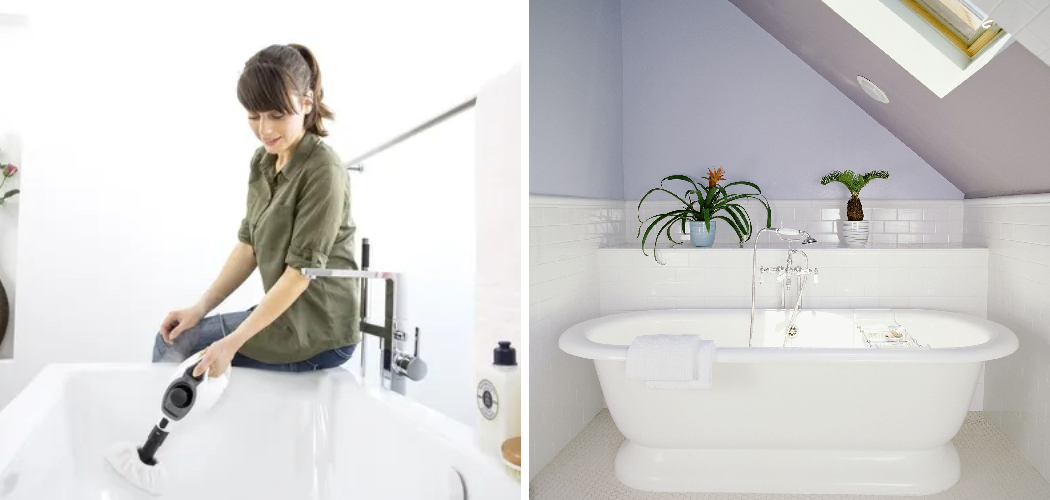Cleaning a bathtub can often be a tedious task, especially when faced with stubborn grime and soap scum that typically require intensive scrubbing. However, for those seeking an easier, labor-saving approach, exploring how to clean a bathtub without scrubbing can make all the difference. Common challenges, such as built-up soap residue and mineral deposits, can seem daunting, but embracing alternative cleaning methods can tackle these issues with minimal effort.

This article will provide an overview of various techniques that simplify the process, including natural cleaning solutions, effective commercial products, and preventive measures to maintain a pristine tub. Following these guidelines allows readers to enjoy a clean and inviting bathroom without needing strenuous scrubbing, transforming their cleaning routine into a more enjoyable experience.
How to Clean a Bathtub Without Scrubbing: Using Natural Cleaning Solutions
Natural cleaning solutions offer an effective and eco-friendly way to tackle bathtub grime without harsh chemicals. Two popular methods are vinegar, baking soda, lemon juice, and borax.
Vinegar and Baking Soda Method
This method is both simple and powerful. Vinegar is a natural acid that helps to break down soap scum and grime, while baking soda serves as a gentle abrasive that rids surfaces of buildup without requiring scrubbing. To clean your bathtub using this method, start by sprinkling an even layer of baking soda across the entire tub surface. Next, spray white vinegar generously over the baking soda; you should see it fizz as the two ingredients react. Allow this mixture to sit for 15-20 minutes to penetrate and loosen any dirt. Finally, rinse the tub thoroughly with warm water, revealing a fresh and clean surface. This method is ideal for regular maintenance and effectively addresses light to moderate buildup.
Lemon Juice and Borax Method
Combining lemon juice and borax is a highly effective alternative for tougher stains and grime. Lemon juice acts as a natural acidic cleaner, helping to dissolve stains and leave a fresh scent, while borax enhances the cleaning power by disinfecting and lifting stubborn marks. To use this method, mix lemon juice with borax until a paste forms. Apply the paste directly to the stained areas of the tub and let it sit for 15-30 minutes to allow the ingredients to work their magic. Once the time has elapsed, rinse off with warm water. This method is particularly effective for removing tougher stains and should restore your bathtub’s shine with minimal effort.
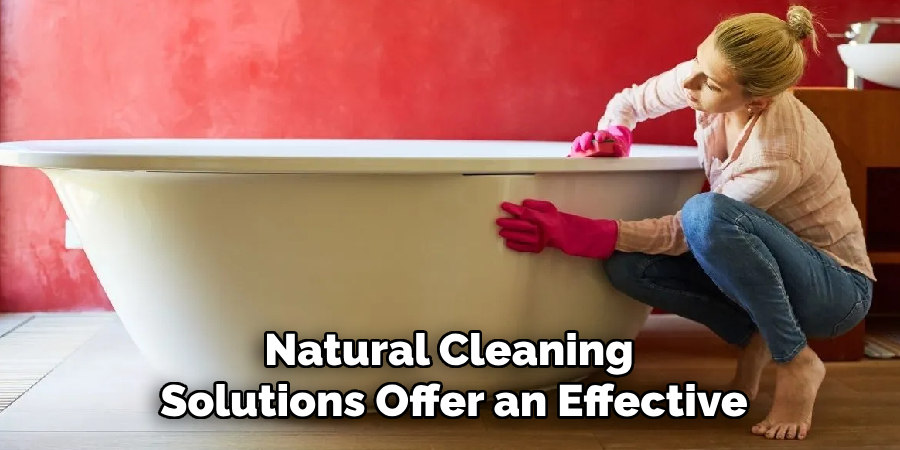
How to Clean a Bathtub Without Scrubbing: Using Commercial No-Scrub Products
No-Scrub Foam Cleaners
Commercial no-scrub foam cleaners are designed specifically to tackle bathtub grime with minimal effort. These products work by expanding to cover the surface, creating a thick foam that clings to dirt and soap scum, breaking them down over time. When selecting an effective foam cleaner, look for those that contain bleach or other powerful active ingredients, as these can enhance the cleaning process and provide deeper results.
To use a foam cleaner, simply spray it evenly across the bathtub’s surface, ensuring you cover all areas, especially those with visible buildup. Allow the product to sit for the manufacturer’s recommended time to maximize its effectiveness, then rinse thoroughly with warm water. This approach can leave your bathtub sparkling clean without the need for any scrubbing.
Shower Sprays for Daily Maintenance
Incorporating daily shower sprays can significantly aid in the prevention of soap scum and grime accumulation. Designed to be used after each shower, these sprays help maintain a clean surface with minimal effort. To effectively use a daily shower spray, simply mist the bathtub and shower walls with the product after each use, paying particular attention to areas that are more prone to buildup, such as corners and edges. This regular application can keep your bathtub looking fresh and clean. However, it’s important to note that while these sprays are excellent for preventing new buildup, they may not effectively remove existing stains, so occasional deep cleaning may still be necessary.
Gel-Based Cleaners for Stubborn Stains
Gel-based cleaners can be a game changer for tough, stubborn stains. These products are specially formulated to cling to vertical surfaces, allowing them to work overtime on heavily soiled bathtubs where regular spray cleaners may fall short. To use a gel cleaner, apply it directly to the stained areas and cover them thoroughly.
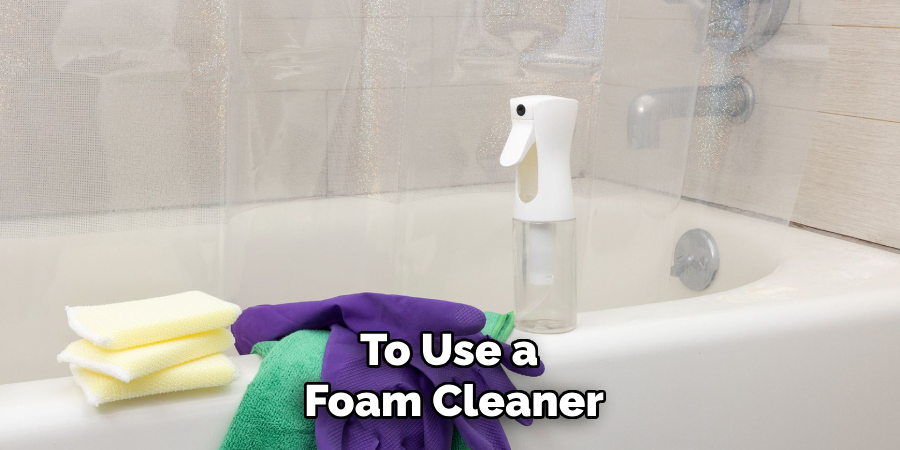
Let the gel sit for the recommended duration—typically several hours or even overnight—to allow the active ingredients to penetrate and lift the stains. After the wait, simply rinse off with warm water, and you’ll likely find that many gels require no scrubbing at all. This method provides an effective solution for maintaining the appearance of your bathtub, ensuring that even the most persistent stains do not stand a chance.
Steam Cleaning: A Chemical-Free Option
Steam cleaning is an effective and eco-friendly approach to cleaning your bathtub without the use of harsh chemicals or extensive scrubbing. A handheld steam cleaner can be particularly useful for tackling stubborn grime, as the high-temperature steam loosens dirt while disinfecting surfaces. To use a handheld steam cleaner, start by filling the water reservoir according to the manufacturer’s instructions. Once filled, allow the unit to heat up, which usually takes a few minutes. Position the steam nozzle at an angle towards the dirty areas of your bathtub, including grout lines and hard-to-reach corners. The steam will penetrate the grime and help lift away residues, providing a fresh and hygienic clean that is tough on bacteria and mold.
Steam Cleaning Tips for Best Results
To maximize the effectiveness of your steam cleaning experience, consider working in small sections of the bathtub at a time. This allows you to focus the steam precisely where it’s needed most. As you direct the steam onto soiled areas, pause for a few seconds to allow the heat to penetrate and break down stubborn grime before wiping the surface with a clean cloth. Also, pay special attention to corners and edges, as these areas accumulate dirt and mildew.
Regularly emptying and refilling the steam cleaner will help maintain optimal performance. While steam cleaning effectively removes dirt and grime, it also serves as a natural disinfectant, targeting visible residues and hidden bacteria and mold, making it an ideal choice for deep cleaning while promoting a chemical-free environment.
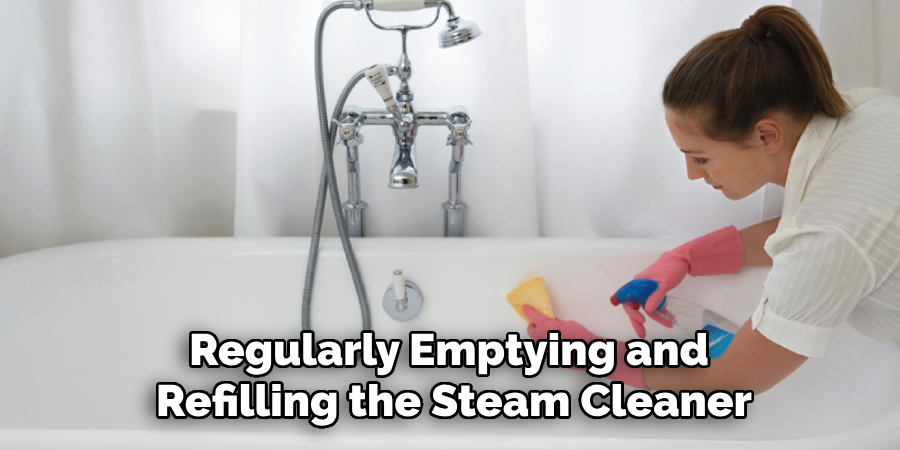
Preventive Measures to Keep the Bathtub Clean
Rinse and Wipe Down After Each Use
To effectively prevent soap scum and grime from building up, it is essential to rinse the bathtub with warm water after each use. This simple practice can significantly reduce the accumulation of residue. Following the rinse, use a squeegee or a clean towel to wipe down the surfaces, which helps eliminate water spots and further prevents buildup. By incorporating this routine into your post-shower habits, you can maintain a clean bathtub and minimize the need for intensive cleaning sessions.
Apply a Protective Coating
Another effective preventive measure is to apply a protective coating, such as bathtub wax or a product designed for automotive finishes. These coatings create a barrier that repels water and soap scum, making it more difficult for stains to adhere to the surface. By using such a protective layer, you not only enhance the ease of cleaning but also prevent stubborn stains from forming in the first place, leading to a cleaner and more hygienic bathtub overall.
Frequently Asked Questions (FAQs)
What Are the Best Products for Cleaning Bathtubs?
Some of the best products for cleaning bathtubs include foam cleaners with bleach, gel-based cleaners for stubborn stains, and natural ingredients like vinegar and baking soda. Each type of cleaner has its benefits, and the choice may depend on the level of grime or staining present.
How Often Should I Clean My Bathtub?
It’s advisable to perform light cleaning after each use, such as rinsing and wiping down the surfaces. A deeper cleaning session should occur at least once a week to maintain cleanliness and prevent the buildup of soap scum and mildew.
Can I Use Regular Household Products to Clean My Bathtub?
Yes, many household products, such as vinegar, baking soda, and dish soap, can effectively clean bathtubs. However, to avoid damage, ensure that these products are suitable for your bathtub’s material.
Is Steam Cleaning Safe for All Bathtub Materials?
Steam cleaning is generally safe for most materials, including ceramic, porcelain, and acrylic. However, it’s essential to check the manufacturer’s guidelines for your specific bathtub to ensure it won’t harm you.
Do I Need to Scrub After Using Gel-Based Cleaners?
In most cases, gel-based cleaners are designed to lift stains with minimal scrubbing. However, for exceptionally stubborn stains, a light scrub may be helpful after allowing the gel to sit as directed.
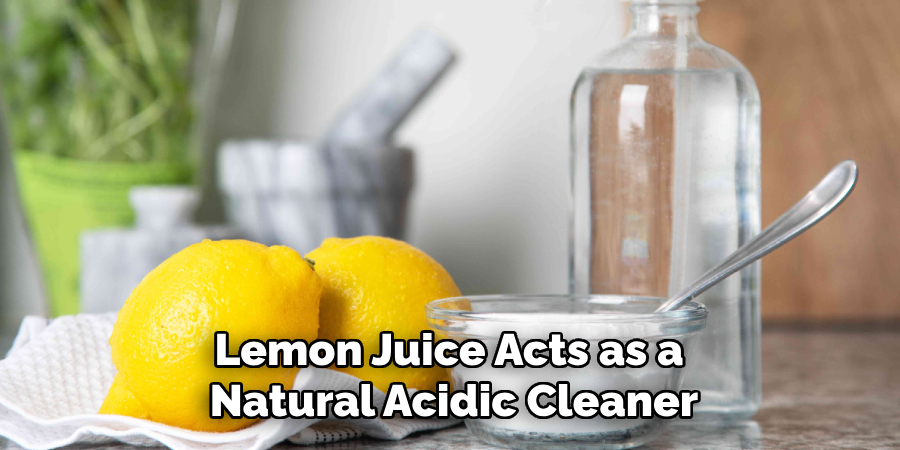
Conclusion
In summary, learning how to clean a bathtub without scrubbing can significantly simplify your cleaning routine while maintaining a sparkling bathroom. Utilizing a variety of methods, from natural solutions like vinegar and baking soda to effective commercial products, steam cleaning, and preventive measures such as daily rinsing, can greatly enhance your cleaning efforts. Each method offers unique benefits, allowing you to find the right approach tailored to your bathtub’s specific condition.
We encourage readers to experiment with these various techniques to discover what works best for their needs. Remember, with the right strategies in place, you can achieve a pristine bathtub with minimal effort. Embrace these no-scrub methods and enjoy a fresh, inviting bathroom space that feels welcoming every time you step in.

